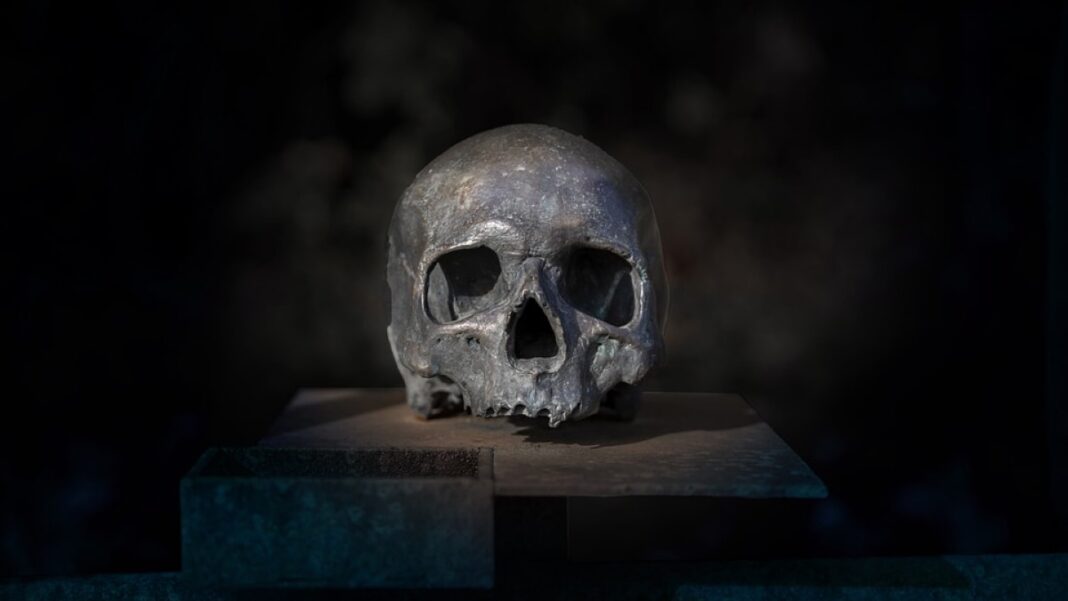The Bronze Age in Britain has always been a fascinating era, shrouded in mystery and intrigue. However, a recent discovery at Charterhouse Warren in Somerset has brought to light a dark and harrowing chapter of British prehistory. The unearthing of 4,000-year-old human remains has revealed a level of brutality and violence that is unprecedented for that time.
The analysis of over 3,000 bone fragments belonging to at least 37 individuals has painted a grim picture of the past. From newborns to adults, these individuals bore the marks of a violent end – from scalping to decapitation, defleshing, tongue removal, evisceration, and even signs of cannibalism. The sheer brutality of these acts hints at a period of intense social and political violence during the Early Bronze Age, estimated between 2200 and 2000 B.C.
Rick Schulting, an archaeologist at the University of Oxford, and his colleagues conducted a bone analysis that revealed the extent of the violence inflicted upon these ancient individuals. Thirty percent of skulls showed fractures sustained around the time of death, while approximately 20 percent of the bones bore cut marks from stone tools, indicating post-mortem actions. Decapitation, tongue removal, and evisceration were confirmed in several individuals, shedding light on the gruesome fate they met.
The motivations behind these violent acts remain unclear. The sheer scale of violence and the number of victims point towards a massacre rather than any known Bronze Age funerary practices. The study suggests that the brutality could have been driven by retaliatory actions or violations of social norms, possibly stemming from intense political motives. Violence of this nature often served a social function, shaping group identity and relationships within the community.
Interestingly, traces of Yersinia pestis, the bacterium responsible for the plague, were found in the teeth of two child victims. This discovery has led researchers to speculate that fear of illness may have played a role in escalating tensions within the community, contributing to the violence witnessed in the ancient remains.
As researchers continue their work on unraveling the events surrounding this grim episode of British prehistory, one thing remains certain – the discovery at Charterhouse Warren has shed light on a dark and brutal period in our past that challenges our understanding of Bronze Age society and the complexities of human behavior.
—
Conclusion
The discovery of 4,000-year-old human remains at Charterhouse Warren in Somerset has unveiled a dark and harrowing chapter of British prehistory. The unprecedented level of violence reflected in the bone analysis has sparked new questions about the social and political dynamics of the Early Bronze Age. As researchers delve deeper into the remains, the mysteries of this ancient past continue to unfold, painting a vivid picture of a time marked by brutality and fear.
—
Frequently Asked Questions
- What was discovered at Charterhouse Warren in Somerset?
- Human remains dating back 4,000 years, revealing unprecedented violence.
- Who conducted the bone analysis of the remains?
- Rick Schulting, an archaeologist at the University of Oxford, led the analysis.
- What were some of the violent acts inflicted on the individuals?
- The acts included scalping, decapitation, defleshing, tongue removal, evisceration, and signs of cannibalism.
- What do researchers speculate about the motivations behind the violence?
- Researchers suggest retaliatory actions or violations of social norms may have driven the violence.
- What role did disease play in the ancient community?
- Traces of Yersinia pestis, the plague bacterium, were found in the teeth of two child victims, suggesting fear of illness may have escalated tensions.
- What does the discovery at Charterhouse Warren reveal about Bronze Age society?
- The discovery challenges our understanding of Bronze Age society and sheds light on the complexities of human behavior.
- How are researchers continuing their work on the remains?
- Researchers are further unraveling the events surrounding this grim episode of British prehistory to gain more insights.
- What impact does the discovery have on our understanding of the past?
- The discovery highlights a dark and brutal period in our history, prompting new questions about ancient societies.
- Why is the Charterhouse Warren discovery significant?
- It provides a unique glimpse into the violent past of the Early Bronze Age and raises intriguing questions about human behavior.
- What can we learn from the analysis of the ancient remains?
- The analysis offers valuable insights into the social and political dynamics of the time, challenging conventional views of Bronze Age life.
—
Tags: Bronze Age, Charterhouse Warren, Somerset, Human remains, Violence, Early Bronze Age, Archaeology, Ancient History
- The analysis offers valuable insights into the social and political dynamics of the time, challenging conventional views of Bronze Age life.

